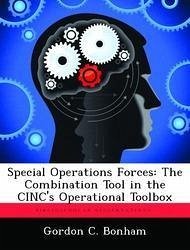This monograph examines the application of special operations forces (SOF) as a means to achieve strategic ends across the operational continuum. In war, political constraints are minimal, and a theater commander-in-chief (CINC) is allowed to employ overwhelming conventional force, across time and space, to accomplish his strategic ends. However, in operations short of war, political limitations restrict the CINC's "expression" of operational art in terms of time, space and amount of force. SOF provides the CINC a means to conduct operational art within the political restrictions. Capable of conducting independent special operations or complementing conventional forces, SOF is a versatile and flexible "tool" for use across the operational continuum. The monograph analyzes three historical cases of SOF across the operational continuum. Operation Galahad (Burma, 1944), Operation Kingpin (Vietnam, 1970), and Operation Thunderbolt (Uganda, 1976) illustrate the use of SOF in war, conflict, and peacetime competition respectively. The validity of SOF as an operational "tool" is determined by passing these examples through the "lens" of FM 100-5's criteria for operational art. The analysis shows that special operations conducted by SOF provides the ways and means to achieve the ends regardless of the political constraints. This study concludes that SOF provides the CINC with a versatile means to achieve his strategic ends across the operational continuum. Like a carpenter's combination tool, SOF provides a wide variety of capabilities for the CINC's operational toolbox. In war, SOF exploits enemy weaknesses, as a combat multiplier for conventional forces, and sets conditions for operational success. In operations short of war, where conventional forces are constrained by political limitations, SOF provides a means to achieve the strategic ends for the theater. In short, as the political influence on the operational continuum increases, the application of SOF increases as t








